Thoughts on being local
João Paupério & Maria Rebelo, Tornavento, 2024 Link
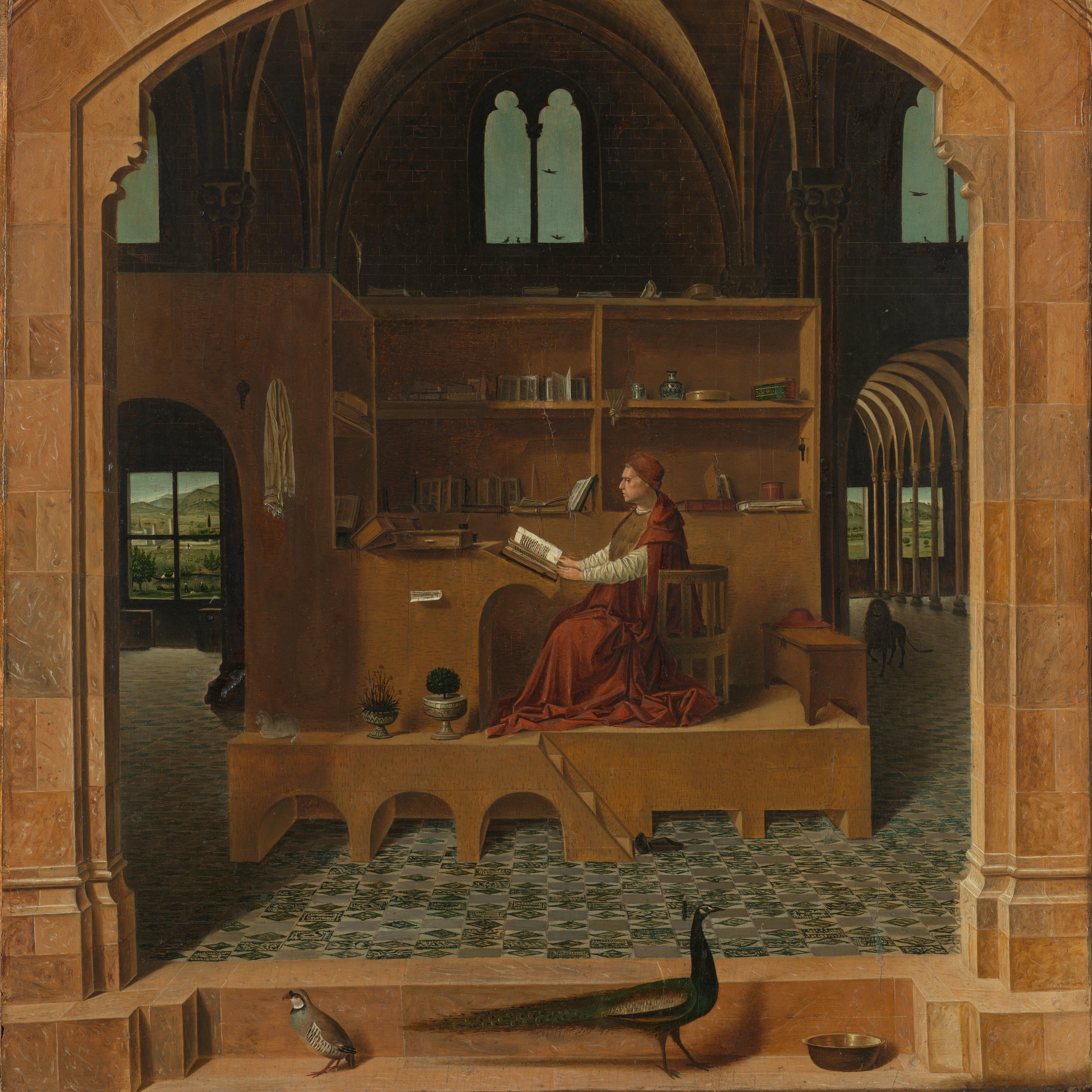

Tornavento Who do you consider as a master, a reference figure of which you feel in some way heirs?
atelier local First of all, we should clarify that we have a problem with the very notion of masters or heroes in whatever domain of thought. Architecture is no exception. It is easy to understand why someone may feel the need to look for a sort of paternal figure, particularly in a field where the nature of knowledge itself and the simple distinction between a good and a bad design are sometimes so hard to grasp. As Denise Scott-Brown critically wrote, “architects, grappling with the intangibles of design, select a guru whose work gives them personal help in areas where there are few rules to follow.” As far as we see it, though, to have masters means to be entrapped from the departure, feeling too sure to follow a safe path instead of putting their own perspectives into question. As those “heros” actually did, some way or another, with their own referential figures.
Evidently, this does not mean we do not look into others’ work. On the contrary, we are fascinated by architecture and we are always keen to discover new works, both by ancient and contemporary architects. For us, studying is the way to enrich our conceptual toolbox. It enables ourselves to position not only within the discipline, but in face of the world, conceiving our proposals as contributions to widen the first and transform the latter. Even if only in the most cynical and impotent of manners. In our case, this means studying not only architecture, but philosophy, politics, sociology… We tend to look at architecture not only from an aesthetical but also ethical point of view. That’s why we also write.
That being said, we learnt a lot from the Smithsons, Venturi & Scott-Brown, Renaudie & Gailhoustet, Lacaton & Vassal, Bo Bardi, Baukunst and many others whom we understand illustrate a commitment to change the art of inhabitation. Starting from what existed already and engaging it through a proper and singular politics of aesthetics. Besides them, when we need to address specific issues of language or composition in our designs, we obviously look into the work of so many others… both to their words (ideas) and images (gestures). We also pay attention to the city in all its guises, to ordinary and anonymous gestures of architecture… avoiding any prejudices. Let’s says that our master is the world itself, which obviously encompasses the whole history and theories of architecture. That which is already there is too much to be ignored. It is our duty to enlarge it and a stupidity not to take advantage from it.
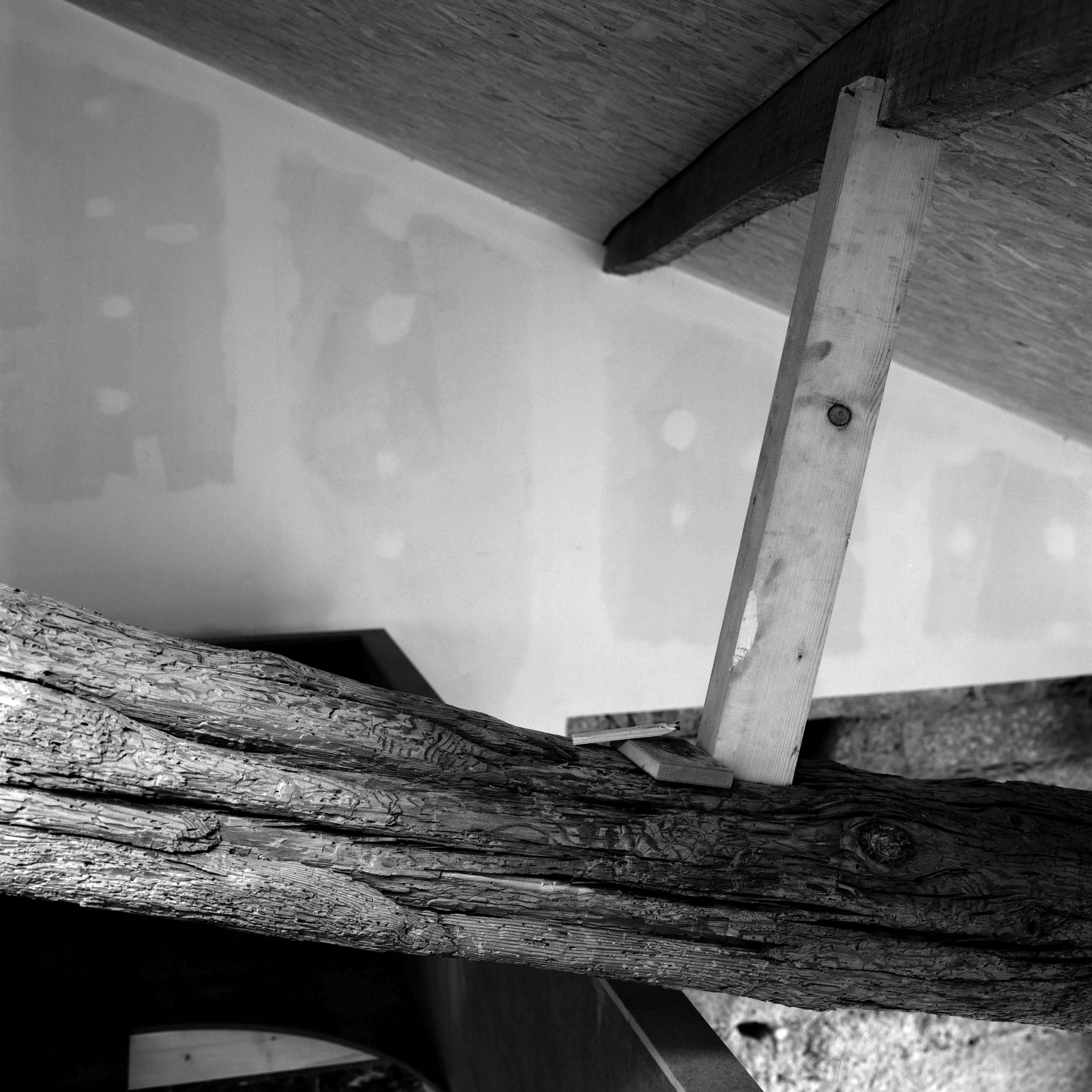
Tornavento What line of thought feeds the philosophy of your study and the imagination of your projects?
atelier local It is very hard for us to single out one line of thought, as we are still a very young practice with limited experience. In any case, we have not stipulated a philosophy or a method beforehand, even if Hermann Czech sounded about right when he wrote that “those without experience should start with methodology”. If architecture is a form of language, every image of every project we know constitutes a sort of substratum for imagination, raw matter to be processed according to each situation. In this sense, we guess the consistency of our thought lies in the ability to know the reasons why we pick one image over another. It lies in the ability to consciously resort to memory as a method. Of course, this method can only be the result of experience itself. Yet experience consolidates a method which in that process dissolves its need as such, giving place to intuition.
In our case, this imbroglio has been resolved by placing a certain amount of trust in the process itself. That is to say, in the ability to observe and learn from each situation and those involved in them, in order to extract our own theoretical principles. The attention to the “found” and the “as found”, as formulated by the Smithsons, is central. Though even if we depart from what is already there and we abominate any form of tabula rasa, our relationship to places may not be considered strictly contextualist. We look at places not only for what they are, but for whatever they have the potential to become. We preserve everything we can, but we are in no way conservatives, quite the opposite. For us, local stands for a complex entanglement of material and subjective ecologies at our disposal, ready-mades to be turned around in order to revolve their own meaning. Thus as part of each place must be included the knowledge of those who dwell in or those who reflect upon it.
What already exists is not an impediment or constraint, something fatal to be mimicked or ignored, but rather a way of avoiding the embarrassment of a blank canvas and achieving greater freedom for our own subjectivity. Perhaps, if we really need to formulate a philosophical stance guiding our work it would have to be two. On the one hand, we always admit that we know less than we may learn from the situations in which we find ourselves: never alone, always with others. On the other hand, that doing/not-doing, making/not-making are equally important poles of any architectural proposal. We are not minimalists, but we prefer minimal gestures as well as a minimal amount of gestures.
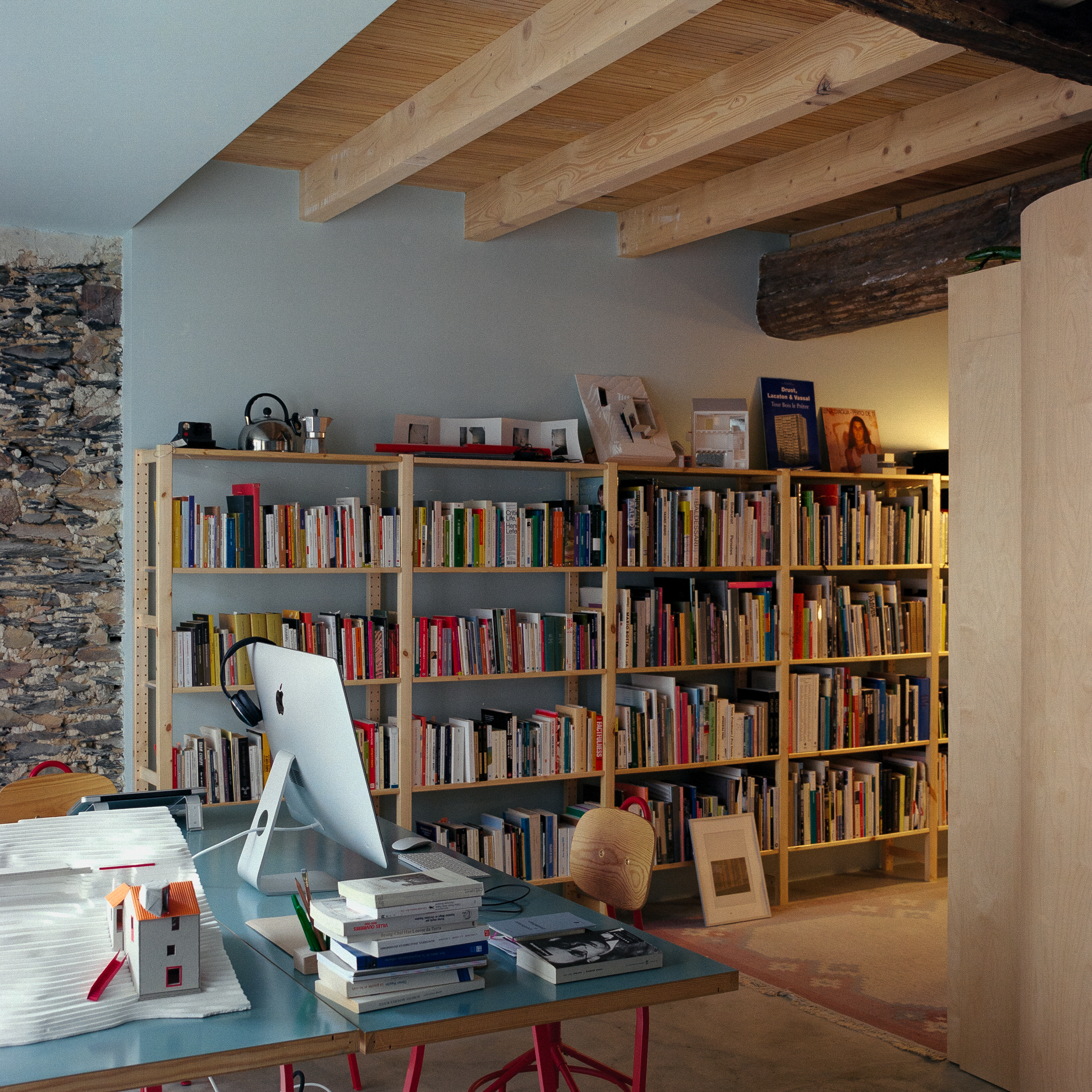
Tornavento Which are the main stages of a project’s creative process?
atelier local As we said, we do not have a formalized method yet. Probably, we do not even want one. Perhaps, we should reinforce this idea that the first stage of our creative process starts with all the projects we have previously studied. Then, we listen, we observe… and we discuss a lot between ourselves, even before we start drawing anything at all. We begin by sorting out what is important for us to keep and what is not. In fact, something common in our way of working is to survey ourselves the place where we are going to intervene. Not so much because we think we will find the solution there, but because that place acts as a mnemonic trigger for us to remember many other places. The project may be found on site only because we are there, and the answer to the problems it raises may very well be found somewhere else, in many other places that we have studied and that for some reason come back to our minds. Then, we start putting together those fragmented (sometimes even contradictory materials which we have picked up: the ones we found on site and the ones we already carried in our memory.
This is mostly valid for the conceptual stages, that is, in order to establish each project’s main themes as well as the guidelines framing our trajectory. After that, in terms of its constructive and technical definition, we actually like to keep design as open as possible, up to the point when its building actually starts. Then, our design shall evolve through discussion with the workers and craftspeople who confront us with their proper knowledge. Sometimes this even has fundamental implications for the materialisation of the ideas we had previously established. This is why we always avoid presenting 3D images or rendered versions of our proposals to clients. This is strategical. Instead, we use drawings and rather plain abstract models, which allow us to maintain the larger margin of manoeuvre for as long as possible. We have had the chance to have clients who accept this. Anyhow, we always prefer to do as little as possible, as we do not necessarily believe in the virtue of quantity per se.
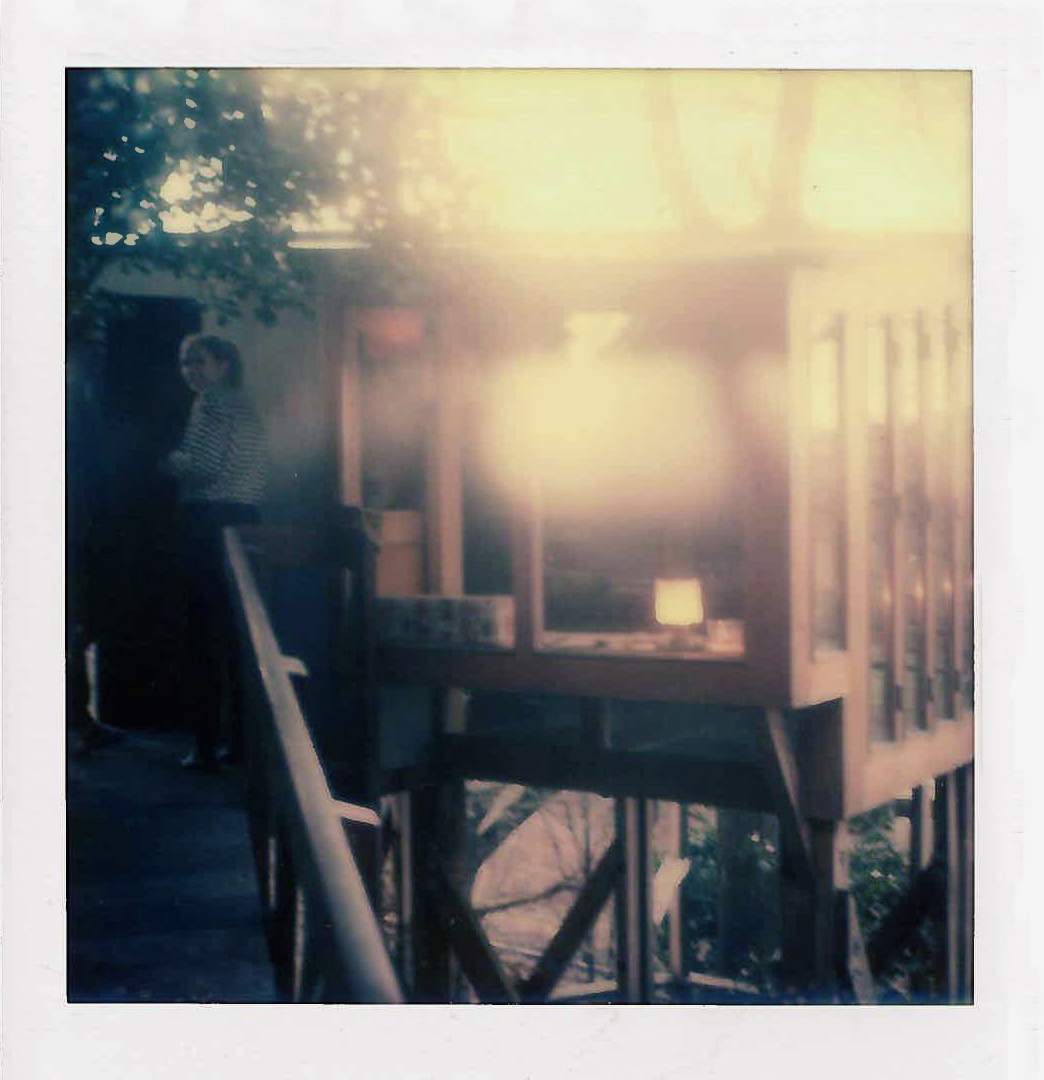
Tornavento How do the places and buildings experienced firsthand participate in the creative process?
atelier local We believe we have previously addressed this question. Yet, it might be important to add one or two things. Firstly, to say that for us it is not indispensable to have experienced those places and buildings in person. We guess one might say that we are local also because we are not that widely traveled and we do not feel that urge. We very much agree with something we listened Josep Quetglas argue in a lecture, a few years ago. That as architects, we are trained to understand a place or a building through images and drawings: plans, sections and elevations. Imagination is in charge of the rest. Anyhow, to be literary is very often more productive than to be literal. Secondly, we must clarify that our relationship to other models and their context is neither strictly typological nor one of veneration for un untouchable integrity. We do not perceive continuity as some kind of burden, but we rather nurture a much more topological relationship with the knowledge we have accumulated. From our days at Baukunst we brought back two important ideas: that “intelligence is the choice between memories” (P. Valéry) and that “when you telescope two images to find a third, you have to delete two of them” (J-L. Godard). In a way, other places and building operate as a toolbox in a material relationship with ideas feeding our imagination. To conclude with yet another of Godard’s aphorisms, it is mostly about “confronting vague ideas with clear images.” This is particular helpful to establish a common language between architects, workers and future inhabitants, around a particularly abstract matter which is sometimes too hard to discuss without examples: space.
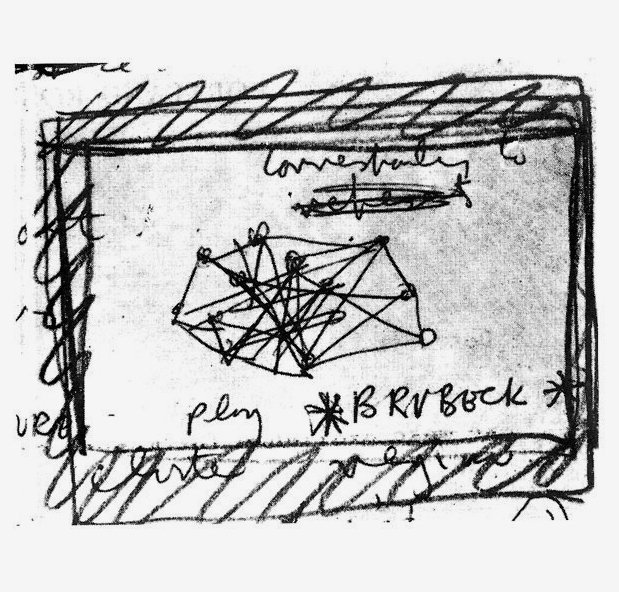
Tornavento How do the external disciplines of architecture re-enter into the project phase?
atelier local Whether we like it or not, human knowledge is far too complex to be produced or even understood by one single individual. It is collective in nature, spanning through geographies of time and space far beyond ourselves. This may sound as a banality, but even though it has its own disciplinary knowledge, tools and procedures, architecture in particular operates more as a process of synthesising other disciplines’ outputs than strictly as a discipline, in the sense of a very well defined section of knowledge. It involves geometry, politics, the physics of materials, climatology and so on, from the very early stages of design. It is embodied in the very process of thinking architecture and not only when an engineer informs us about conventions or standards that we must comply. Properly said, those disciplines do not re-enter, as they actually never leave the project at any stage of conception. From our point of view, it is very hard to isolate the specifically architectural piece of knowledge we carry into each project, as it is always in relation to something else beyond itself. Even when one simply picks a color.
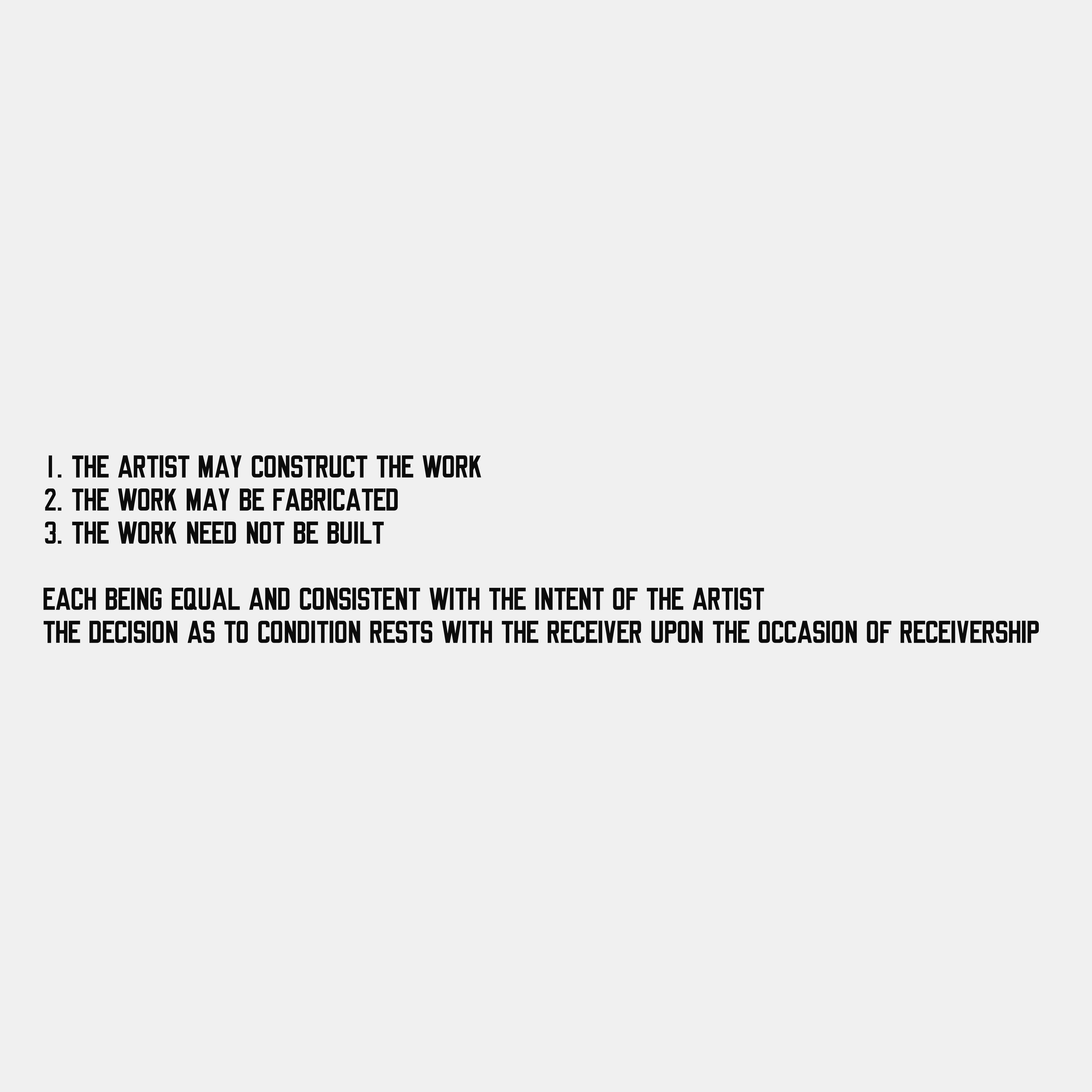
Tornavento What is your relationship with the client?
atelier local This relationship varies and depends considerably on who we find on the other side of the table. As an artistic practice we believe that architecture, despite its uselessness and chronic inefficiency (or rather because of it), is supposed to transform everyday life. We particularly appreciate Weiner’s provocative formulation that “art should fuck up people’s lives”. In a good way, this means that even on small scale an architectural project may lead its inhabitants to put to the test some of their habits or domestic protocols. It is a matter of questioning etiquettes that we may have inherited but no longer make sense. Of course, this is never what we were originally hired to do, so it is always quite a difficult task, sometimes bound to failure. What we try to do is to listen very attentively to our commissioners and try to find some cracks in their discourse. These may give us room for manoeuvre to propose something else. Something that is not part of a brief too often informed by stereotypes, commonplaces and the latest market-driven trends found on pinterest, which are seldom synonymous with quality.
An important condition to understand our current field of action is to know the middle classes we have been working for. Generalizing, what characterizes their domestic aspirations is to imagine a house they cannot afford. This creates frustrations and difficulties of understanding throughout the work in process. However, it was Siza who previously wrote that designing private houses for the middle classe taught him the patience and attention needed to carry out participatory processes such as Malagueira, without succumbing to the demagogic temptation of responding to every demand. The impossibilities that arise from these impasses open up breaches. This is why we have been able to carry out some of our ideas. Material constraints force those clients to open up to other hypotheses.
In this context, it is fundamental for those commissioning architecture to be able to put aside some of their preconceptions and place more trust in those who their hired to develop the project. Without trust, our role becomes irrelevant and counter-productive. We have been mostly lucky in this respect, but we have also had cases of clients who did not trust us enough and in the end could not get the building off the ground for budgetary reasons. Or worse, cases where the relationship became so disrespectful from their part that we preferred not to keep going and resigned ourselves.
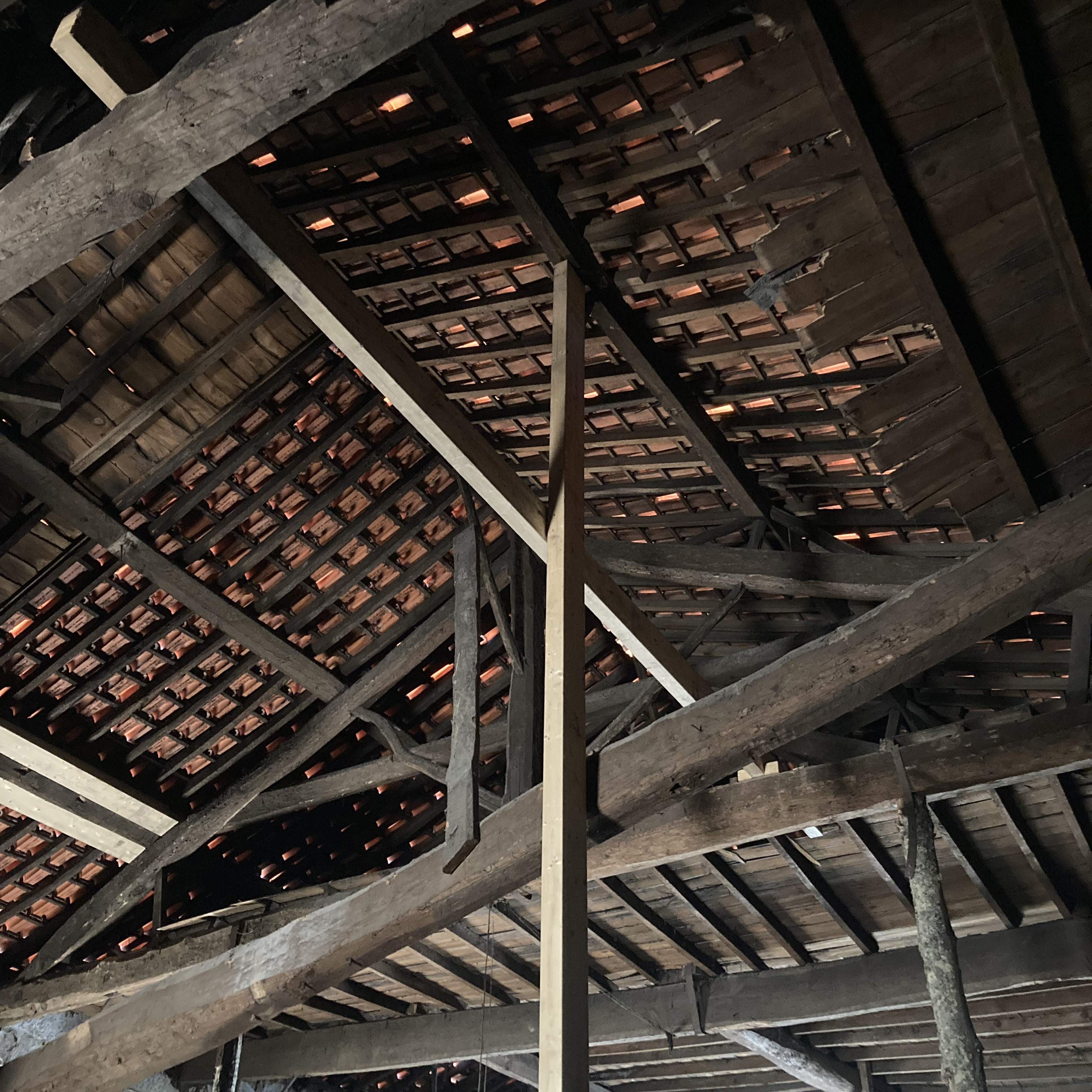
Tornvento What is your relationship with the place where you have to create a building?
atelier local As we explained before, our relationship to places is neither deterministic, romantic nor nostalgic. Places are material conditions which we have to deal with and prefer to incorporate into our design proposals. The opposite is not an option and we feel comfortable with those constraints. However, places are worth as much for what they are as for what they might become. That is why architecture came into being. After all, practically no place rests untouched and all the cities were eventually risen from some original invention, in a manner of speaking, within and against the places where they now stand. Now, cities exist and they are beautiful if only for that very reason. No matter how old or decaying, no matter how transformed, fragmented or incomplete. Cities as well as other forms of landscape are beautiful because they are collective artworks, the greatest sedimentation of human labour, culture and knowledge condensed into matter. Every street, every square and every garden, but also every alleyway, dead-end or terrain vague. By city one does not strictly refer to its most consolidated core, usually known as its “historical” centre. Every fragment is beautiful for what it is, which is to say, for its potential to become something else. Every place as something lying around for us to pick up, turn over and put with. That is why we feel equally comfortable living and working on the periphery.
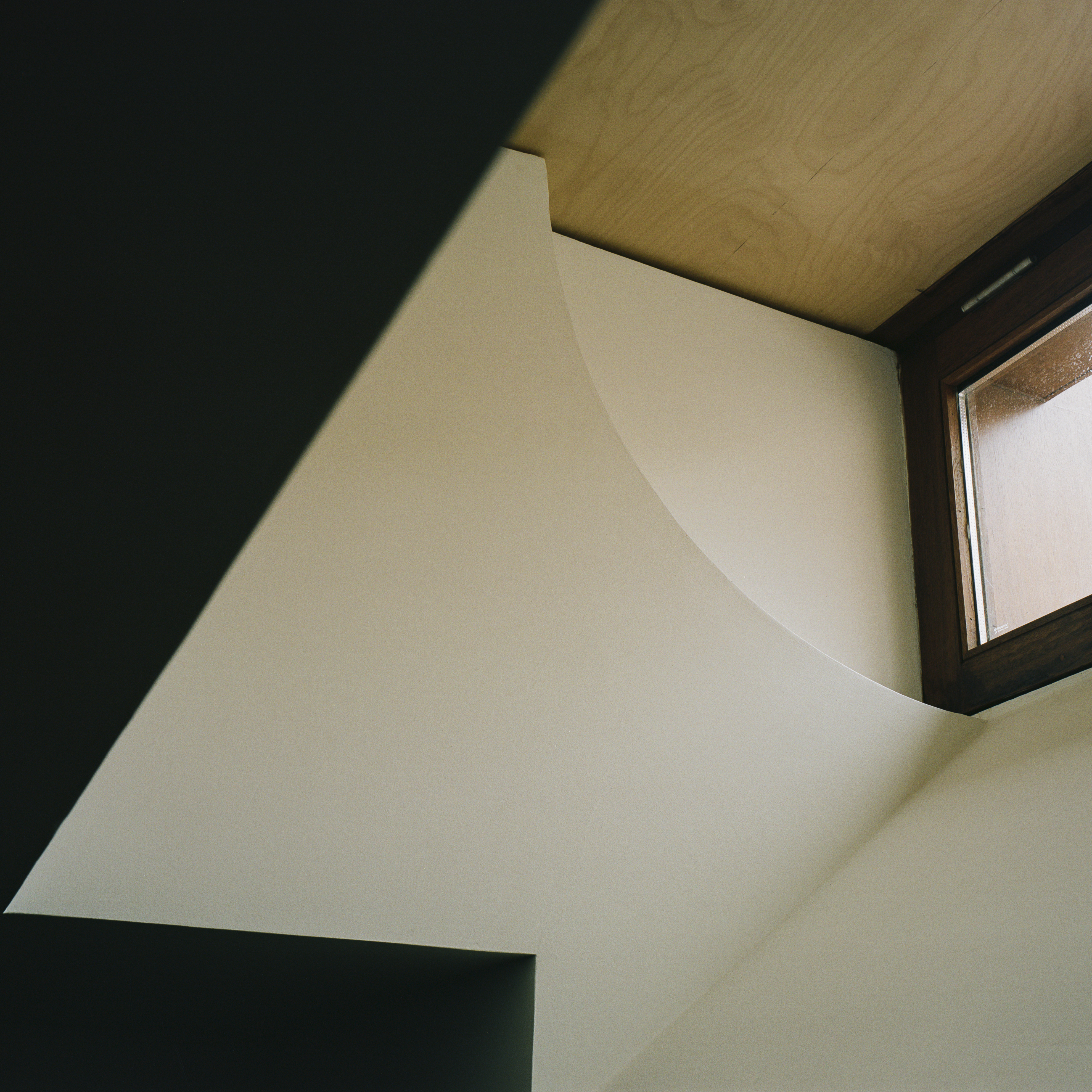
Tornavento How important is the construction detail in your works and how is it managed?
atelier local Our architecture is not an architecture of detail. By this we mean that detailing is not the source of its interest or where we usually spend most of our labour time, say, focused on drawing particularly sophisticated details. In fact, we feel quite comfortable working with standard materials and catalogue solutions, even if we often try to subvert them somehow. This does not mean that every now and then one may not find more complex details in our work, as for instance in terms of woodworking.
However, when this happens, we always try to develop the solutions with the craftsmen who are going to fabricate the pieces. We have this very strong relationship with a particular joiner and cabinetmaker with whom we like to collaborate whenever possible. Our contribution is mainly conceptual, theirs is mainly technical: the synthesis always results in a drawing made by several hands. This is one of the reasons why we call our practice atelier local, rather than Rebelo & Paupério architects, an acronym of our names, or something similar… In any case, we reckon that avoiding complicated details is also a way of paying attention to detail. So perhaps, to be a little provocative, we might finally say that our architecture is an architecture of detail, after all.
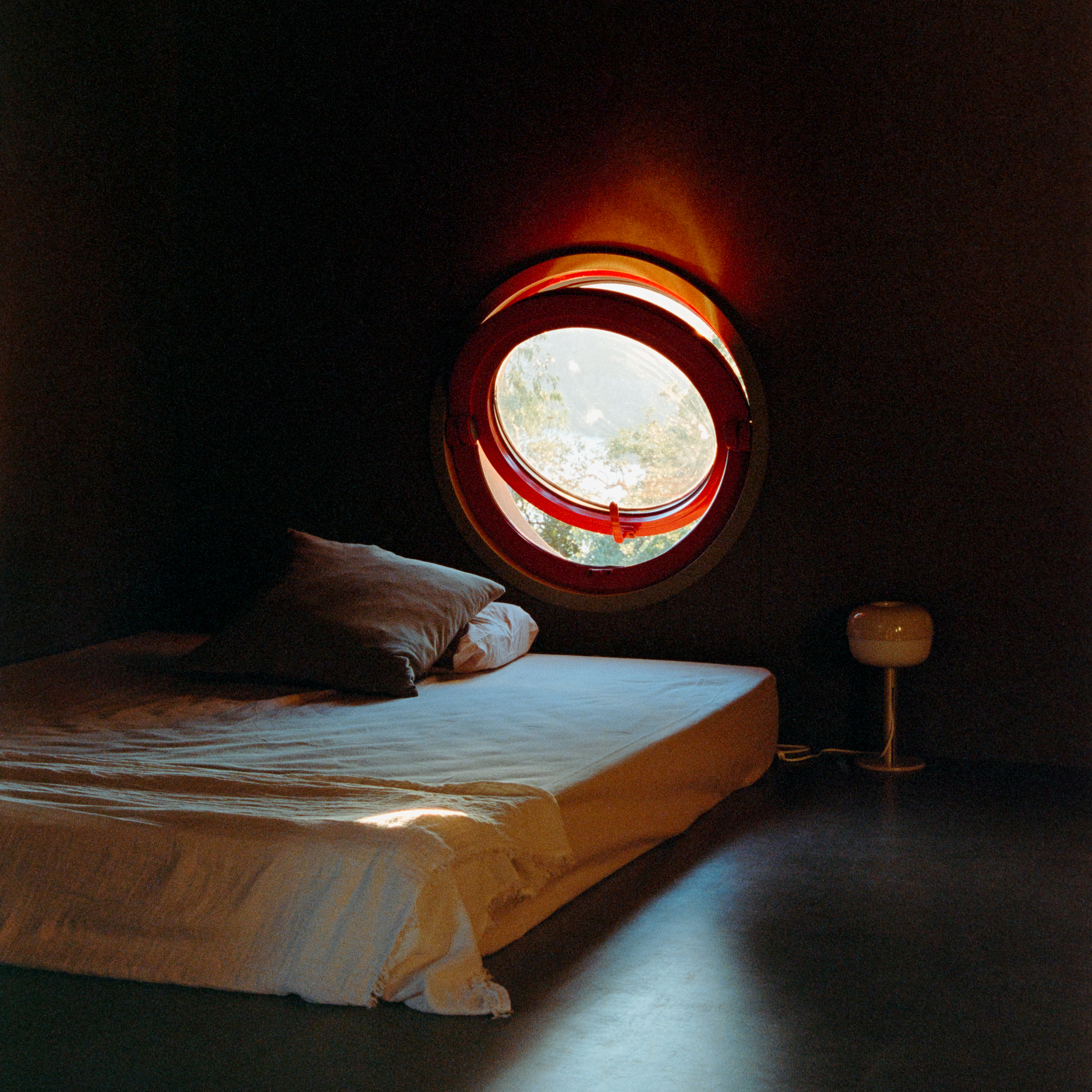
Tornavento How would you explain in which way the material in your works are selected?
atelier local We do not have what you might call an obsession or even a fascination for any material in particular. We tend to use a lot of wood in our projects, not only because wood is beautiful and perceived as a very welcoming material by most people, but also because we really appreciate working with the joiner we were telling you about before. Having said that, it’s obvious from our built work that we attach quite a lot of importance to texture and color, beyond form. We are not so much into phenomenology, but we appreciate rather charged environments: rich atmospheres, even though most times these end up being fabricated from poor materials. We like to use raw materials whenever possible. Yet, we do not hesitate to paint them, every once in a while, to make them stand out for very little money. Of course, when you are working with low budgets and you find that a material such as water-resistant MDF may be used as found, responding to all this ambitions in a single and cheap gesture, it will eventually find its way time and again in different projects. For a short answer, we appreciate finding beauty in the most ordinary materials, by looking at them both for their use-value and for an intrinsic aesthetic value that is often not thought as such.
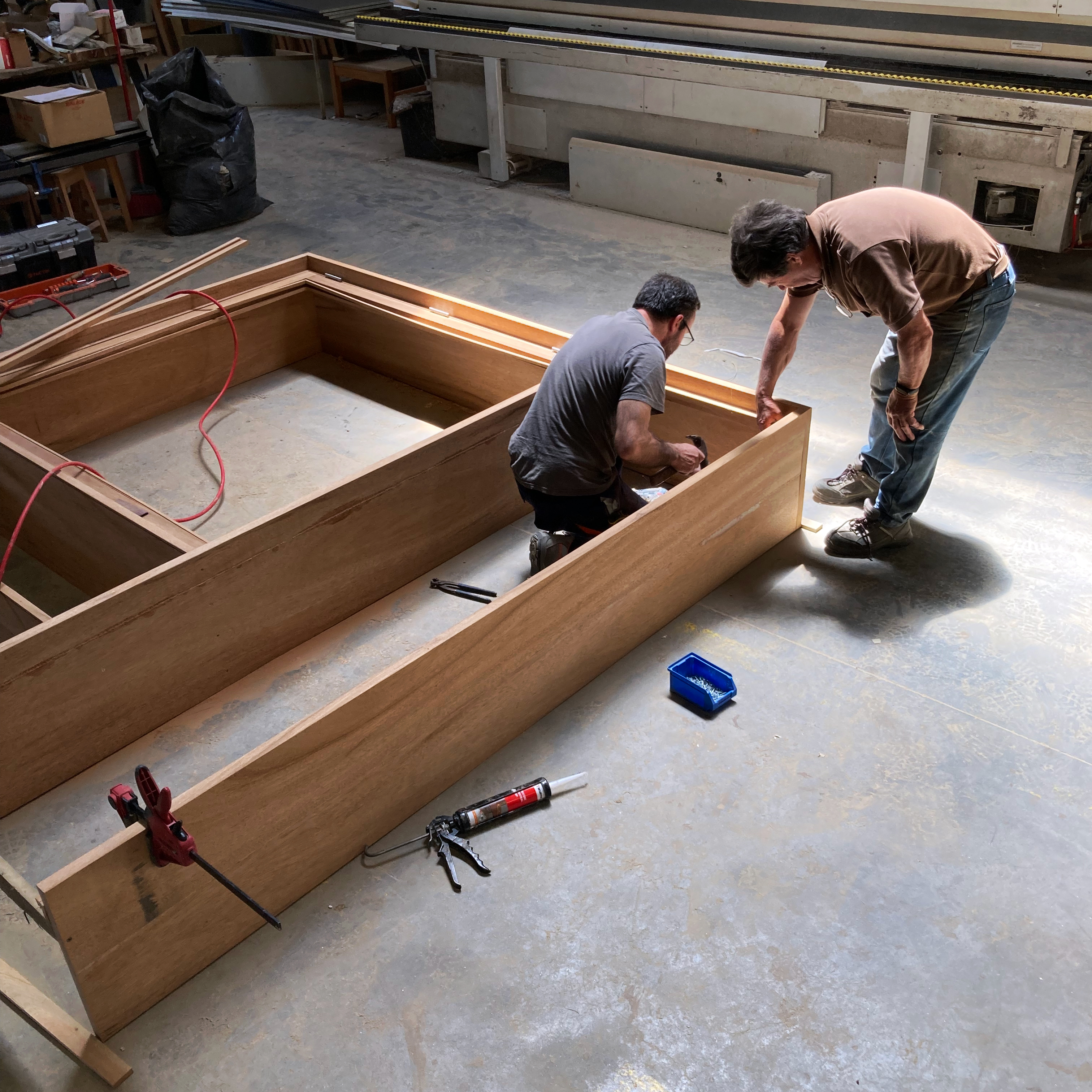
Tornavento How is the relationship with the workers and the construction site in general managed?
atelier local We like to foster a collaborative approach on construction sites. As architects, we have a specific knowledge that is mainly conceptual and organisational. On the other hand, workers have the experience and technical knowledge to turn those ideas into a solid, well-constructed building. This establishes hierarchies that change direction depending on what is being discussed, creating not so much a sense of horizontality, but above all of mutual accountability. Each party has its own responsibility, which cannot be replaced. This is the definition of a local atelier: the mobilisation of all those different skills into a whole that is greater than the sum of the parts, resulting in a truly collective process of design. Of course, in the real world, i.e. under the productive logics of late capitalism, this is not always possible. On the one hand, because it requires the willingness on all sides to make this dynamics emerge; but mostly, because it requires a sort of time and dedication that profit-driven methodologies and decision-making procedures hardly allow today.
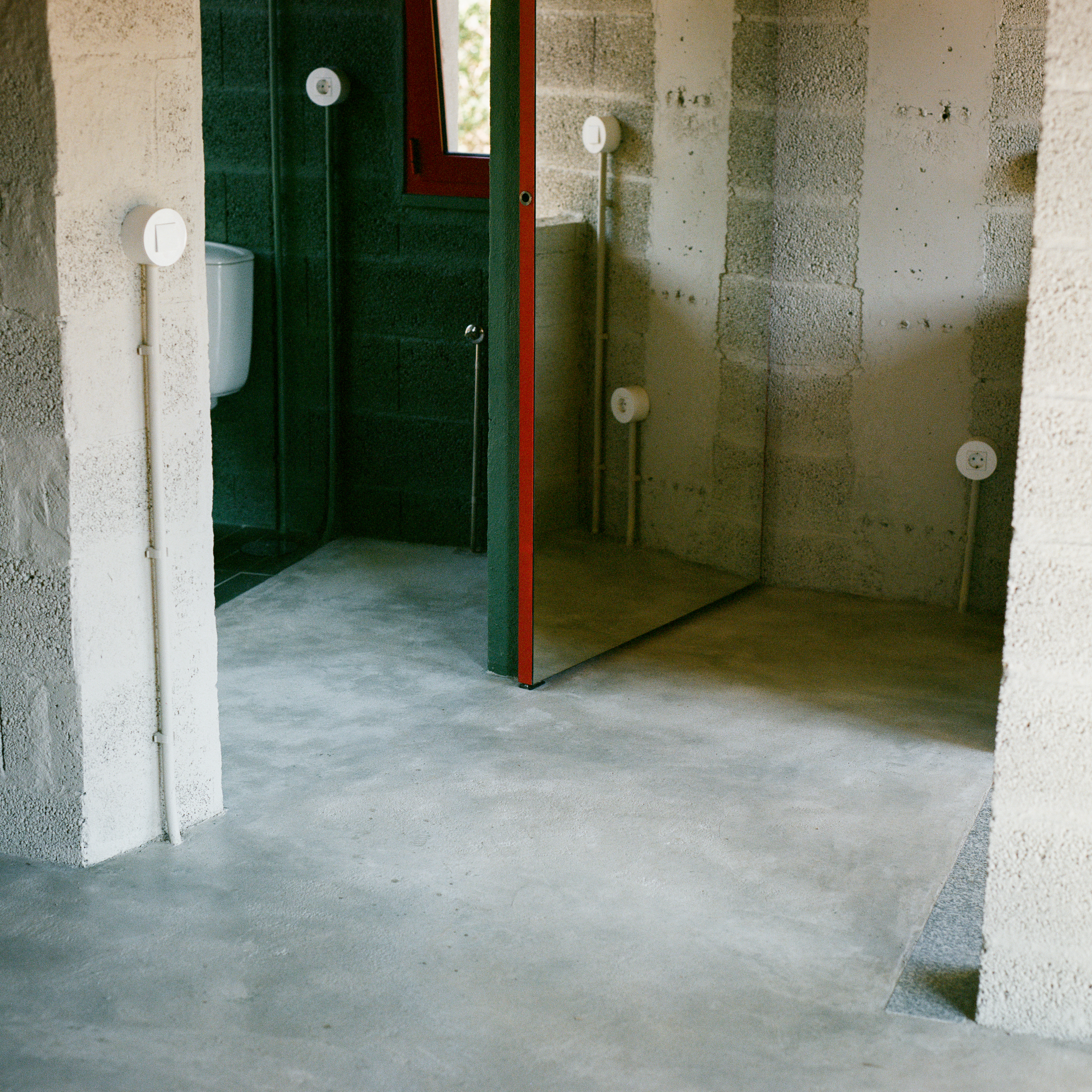
Tornavento Can you explain us a work you made?
atelier local To understand the perpetually moving context in which we operate, we may share the experience of our first commission. We have completed construction this summer, although it was commissioned almost 5 years ago, even before we had formally established our practice. This project consists of a small holiday house in Ancede, in the Douro region.
Since we started, major forest fires have affected Portugal, triggering an enlargement of the National Ecological Reserves within which its plot became included. Meanwhile, the recent pandemic profoundly changed labour relations. Exacerbated by an obstruction of the Suez Canal, the war in Ukraine and many other geopolitical conflicts, this triggered an absurd inflation. Combined with the current shortage of skilled construction labour in Portugal, its original design became impossible. Due to all this, we were forced to design different versions of that same house. Still, it constantly changed throughout construction, constantly escaping our control and forcing us to re-shape our own work methodology. In the end, a project that had the premise of rebuilding a stone house from an existing ruin turned into a kind of rough-hewn, unfinished house, reduced to its concrete bones. Everything had to be built from scratch according to a local contractor’s technical limitations. And yet, there is something about the original project that remained true to its principles right to the end, always thought of as a reconstruction. About its scale, about its spatial distribution…
Rossi argued that “form stays, content changes”. In this case, form stayed but materials turned as cheap as possible: concrete pillars and beams, ordinary concrete blocks, water-resistant MDF and little else. Produced to remain hidden, all these materials were used “as found” and “as is”, in the spirit of the Smithons or Kazunari Sakamoto. In fact, material conditions shaped the scope of our ideas to a point where we finally understood the meaning of New Brutalism, although we are not particularly fascinated by concrete. The Smithsons wrote that “any discussion on Brutalism will miss the point if it does not take into account Brutalism’s attempt to be objective about ‘reality’ - the cultural objectives of society, its urges, and so on.” Brutalism, they claimed, “tries to face up to a mass-production society, and drag a rough poetry out of the confused and powerful forces which are at work.” In our case, it tried to address the mere possibility to exist.
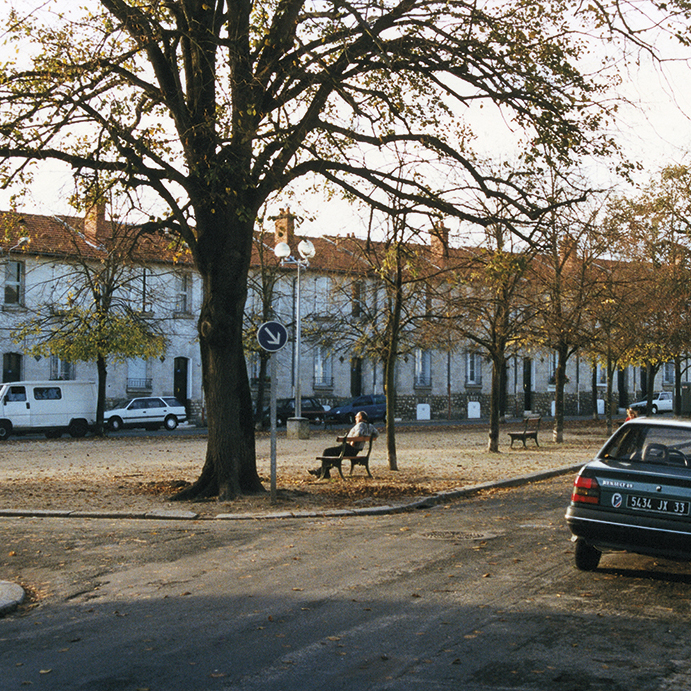
Tornavento Which building by another architect would you like to have built? Why?
atelier local That is a very difficult question to answer. There is not one building in particular we would like to have built. There are too many we deeply appreciate, designed by very different architects in very different periods. Yet, there is a project that is so exceptional that the prospect of never doing anything anywhere near as relevant frustrates us. It is Lacaton & Vassal’s realized proposal for Place Léon Aucoc, in Bordeaux. It may feel like we are being deliberately provocative, but that is the building we would like to have (not) built ourselves. We find it particularly inspiring how they managed to convince the town council not to undertake the project. A process of embellishment which they found unnecessary after a careful job of observing and understanding the ways in which the inhabitants related to the square as it was. In practice, all that was needed was to take proper care of its maintenance. This was their final design for the square and it radically shifts the attitude one may adopt towards each project one undertakes. It is undoubtedly one of the greatest features of resistance in the history of architecture, as well as one of the most relevant example architects should take with them into the 21st century. At a time when it becomes clearer and clearer that every new building has heavy implications for the ongoing environmental catastrophe, or that urban embellishment initiatives often end up having perverse gentrifying effects on places and their inhabitants, Place León Aucoc points us in an alternative direction for the future of architecture and society.